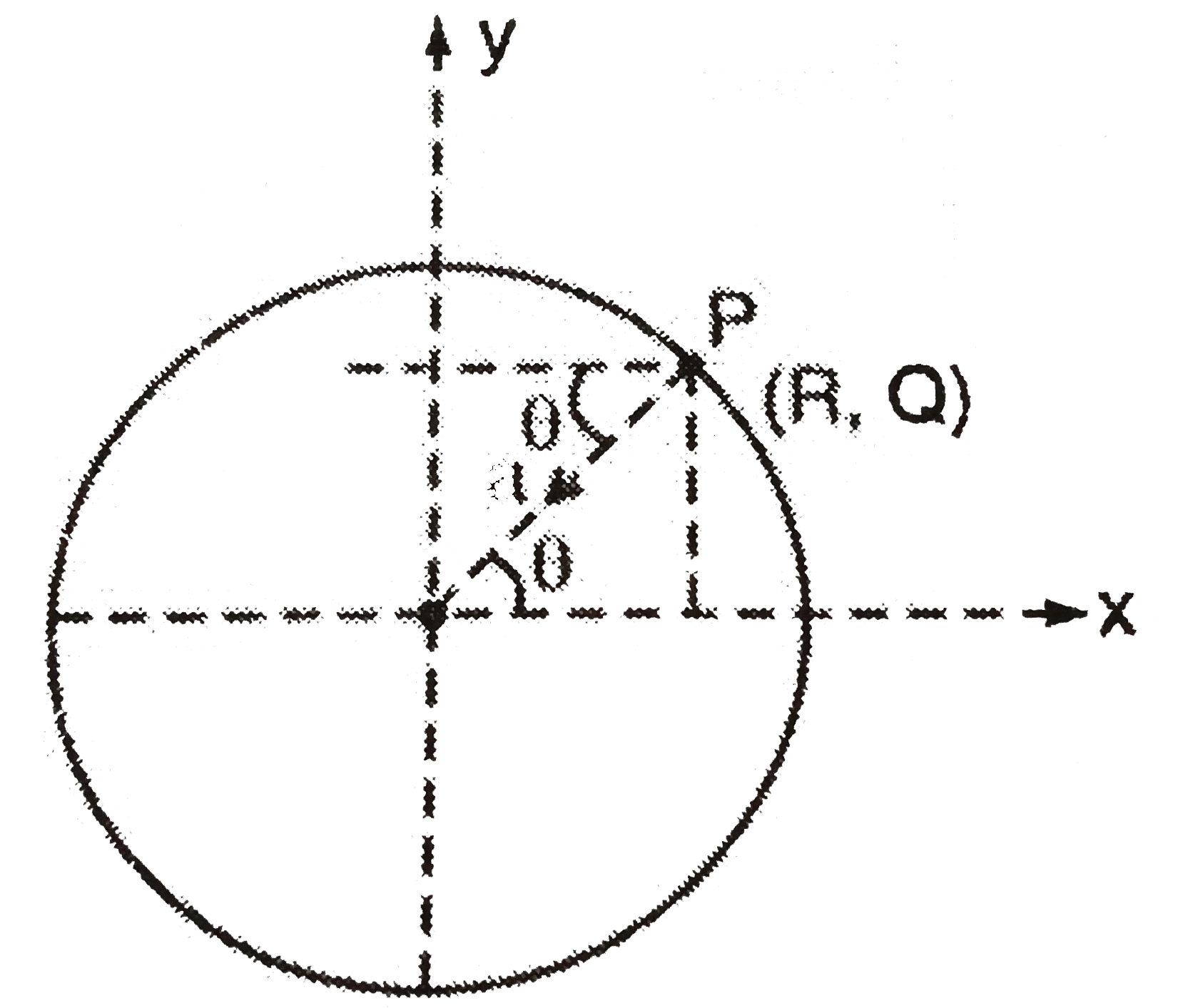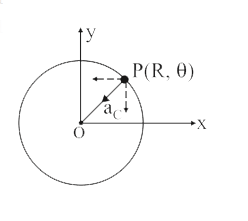For a particle in uniform circular motion , the acceleration →a at a point p(R,θ) on the circle of radiu R is ( Here θ is measured from the x−aξs )
A
−v2Rsinθˆi+v2Rcosθˆj
B
−v2Rcosθˆi+v2Rsinθˆj
C
−v2Rcosθˆi+v2Rsinθˆj
D
−v2Rˆi+v2Rˆj
Video Solution
Text Solution
The correct Answer is:B

→a=axˆi−ayˆj
→a=v2Rcosθˆi−v2Rsinθˆj
|
Topper's Solved these Questions
- VECTORSBOOK - GRB PUBLICATIONCHAPTER - VECTORSEXERCISE - MORE THAN ONE CHOICE IS CORRECT
15 Videos
- VECTORSBOOK - GRB PUBLICATIONCHAPTER - VECTORSEXERCISE - ASSERTION- REASON
1 Videos
- VECTORSBOOK - GRB PUBLICATIONCHAPTER - VECTORSEXERCISE - PROBLEMS FOR PARCTICE
23 Videos
- UNITS AND DIMENSIONSBOOK - GRB PUBLICATIONCHAPTER - UNITS AND DIMENSIONSEXERCISE - Link Compression
6 Videos
Similar Questions
Knowledge Check
For a particle in uniform circular motion the acceleration →a at a point P(R,θ) on the circle of radius R is : ( here θ is measured from the x- axis )
 A−v2Rcosθˆi+v2RsinθˆjB−v2Rsinθˆi+v2RcosθˆjC−v2Rcosθhai−v2RsinθˆjDv2Rˆi+v2Rˆj
A−v2Rcosθˆi+v2RsinθˆjB−v2Rsinθˆi+v2RcosθˆjC−v2Rcosθhai−v2RsinθˆjDv2Rˆi+v2RˆjFor a particle performing a uniform circular motion the acceleration is
Aconstant in directionBconstant in magnitude but not in directionCconstant in magnitude and directionDconstant neither in magnitude nor in direction.In a non uniform circular motion, the acceleration on the particle is
Acentripetal acceleration onlyBtangential acceleration onlyCthe resultant centripetal and tangential accelerationDcentrifugal acceleration
For a particle in a non-uniform accelerated circular motion
View SolutionThe area of a sector of angle θ∘ of a circle with radius R is
View SolutionA particle undergoes uniform circular motion. About which point on the plane of the circle, will the angular momentum of the particle remain conserved?
View SolutionA particle is moving in a uniform circular motion with radius'r' in half revolution the displacement and distance covered by the particle are
View SolutionA particle is moving an a uniform circular motion with radius 'r' Then the distance covered by the particle on one revoution will be
View Solution
